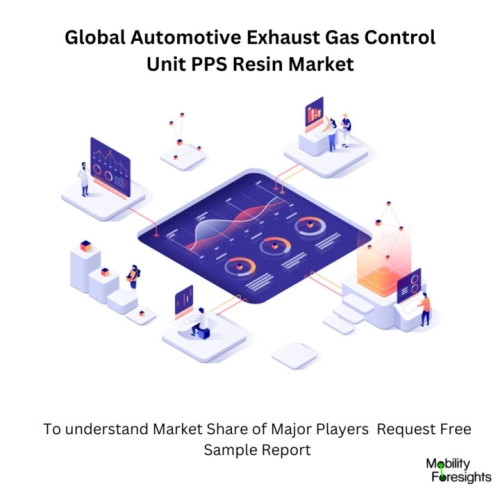
- Get in Touch with Us

Last Updated: Apr 25, 2025 | Study Period: 2023-2030
The exhaust gas recirculation valve, or EGR valve for short, is a crucial component of the car's engine management system and recirculates precisely measured amounts of exhaust gas to the engine intake system for improved engine efficiency, lower fuel consumption, and lower NOx emissions.
The EGR valve will become more crucial going forward due to rising pressure to cut emissions. Knowing what it does, why it fails, and how to replace it when it does is crucial.
Nitrogen makes up around 80% of the air we breathe. The typically inert gas becomes reactive when subjected to the combustion chamber's extraordinarily high temperatures, plus 1370°C, and produces damaging nitrogen oxides, or NOx, which are then released into the atmosphere via the exhaust system.
There are various ways to prepare PPS. P-dichlorobenzene and sodium sulphide would react in a polar solvent to create PPS for commercial use.
Additionally, it can be created by the condensation of p-dichlorobenzene with elemental sulphur in the presence of sodium bicarbonate, or by the polymerization of p-halothiophenoxide metal complexes in both the solid and solution states.
PPS is the perfect material for exhaust gas return valves, carburetor parts, ignition plates, and flow control valves for heating systems because it effectively resists corrosive engine exhaust gases, ethylene glycol, and gasoline.

Global Automotive Exhaust gas control unit PPS resin market accounted for $XX Billion in 2022 and is anticipated to reach $XX Billion by 2030, registering a CAGR of XX% from 2023 to 2030.
The rigid opaque thermoplastic Polyphenylene Sulphide (PPS), which has exceptional heat, chemical, and flame resistance, is frequently used in a range of applications.
These include ignition plates, sterile laboratory equipment, hairdryer grills, and vehicle parts including carburetor parts and exhaust gas return valves.
PPS has been used in electrical components in place of metals and some thermosets due to its heat resilience and high electrical insulation qualities.
Because lamp reflectors must resist temperatures of up to 250 degrees Celsius, they are still mostly composed of thermosets or diecast metal.
However, unlike filled thermoplastics, Tedur (PPS) can be used to create a surface finish that can take vapour metallization without the requirement for intermediate painting.
| Sl no | Topic |
| 1 | Market Segmentation |
| 2 | Scope of the report |
| 3 | Abbreviations |
| 4 | Research Methodology |
| 5 | Executive Summary |
| 6 | Introduction |
| 7 | Insights from Industry stakeholders |
| 8 | Cost breakdown of Product by sub-components and average profit margin |
| 9 | Disruptive innovation in the Industry |
| 10 | Technology trends in the Industry |
| 11 | Consumer trends in the industry |
| 12 | Recent Production Milestones |
| 13 | Component Manufacturing in US, EU and China |
| 14 | COVID-19 impact on overall market |
| 15 | COVID-19 impact on Production of components |
| 16 | COVID-19 impact on Point of sale |
| 17 | Market Segmentation, Dynamics and Forecast by Geography, 2023-2030 |
| 18 | Market Segmentation, Dynamics and Forecast by Product Type, 2023-2030 |
| 19 | Market Segmentation, Dynamics and Forecast by Application, 2023-2030 |
| 20 | Market Segmentation, Dynamics and Forecast by End use, 2023-2030 |
| 21 | Product installation rate by OEM, 2023 |
| 22 | Incline/Decline in Average B-2-B selling price in past 5 years |
| 23 | Competition from substitute products |
| 24 | Gross margin and average profitability of suppliers |
| 25 | New product development in past 12 months |
| 26 | M&A in past 12 months |
| 27 | Growth strategy of leading players |
| 28 | Market share of vendors, 2023 |
| 29 | Company Profiles |
| 30 | Unmet needs and opportunity for new suppliers |
| 31 | Conclusion |
| 32 | Appendix |